There are some things every caring, responsible dog owner needs. Whether you are a longtime dog owner, have just acquired your first canine companion, or are still in the planning process to adopt a dog, it’s important that you have the basic tools that make life with a canine family member run smoothly. Some seem obvious – a collar, leash, food dish – but even those aren’t always as simple as they appear. Here’s a comprehensive look at the right stuff to have on hand to help your dog-keeping go smoothly.
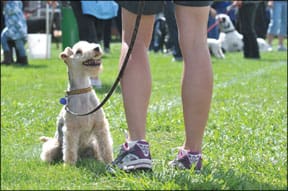
288
Training equipment
Pretty much every dog owner has a collar and a leash for her dog. But do you have the right ones?
Collars and leashes
Call me simple, but my favorite leash-attachment appliance is still the plain old flat collar. Since many of us have stopped jerking dogs around, the dog training industry has devised a lot of tools to help with control in ways that are gentler than the old-fashioned choke chains and prong collars, or (heaven forbid!) shock collars. I do recommend and use front-clip control harnesses for training purposes – but since they can’t be left on the dog all the time, there’s still the need for a regular collar as a place to hang ID tags, if nothing else.
Attributes I look for in a collar: Strength; quality materials and stitching (pay special attention to the quality of any buckles); and ease of adjustment.
The same selection criteria apply to leashes. In my opinion, six feet is the perfect leash length for normal activities; it’s long enough to give your dog a reasonable “loose leash zone,” but short enough so that you can keep him out of trouble.
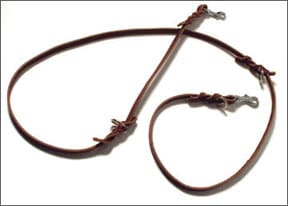
288
I remember when trainers insisted on leather leashes only for training, claiming that leather was softer on the hands – you know, with all that jerking on the choke chain. It’s still true that leather is easier on the hands than a hard nylon leash; even though we’re no longer yanking on the leash, some dogs do pull hard. But there are some wonderfully soft nylon and hemp leashes available now, too.
- Soft, high-quality leather collars and leashes – J and J Dog Supplies: jjdog.com; (800) 642-2050
- Wonderfully soft nylon collars and leashes – White Pine Outfitters: whitepineoutfitters.com; (715) 372-5627
- Comfy and attractive hemp collars and leashes – earthdog.com; (877) 654-5528
Identification
Speaking of ID tags – your dog should wear one, along with a license, on his collar at all times. If you’re worried about him getting the tags caught in a heater vent or wedged in a crack in his crate, you can rivet the tags to his collar. Or, get one of these neoprene tag pouches, which both contain the tags and keep them quiet.
- Quirt Spot Pet Tag Silencer – Itzadog.com; (800) 961-2364
Additional Training Gear
A few more items can make handling your dog exponentially easier. A tab – a short, 4-inch or 6-inch leash attached to your dog’s collar – can be a useful item. Tabs are especially helpful for dogs who don’t like their collars grabbed, but also for any time you might need an unobtrusive “handle” for your dog. You can make one by cutting an old leash to the appropriate length; they are also available from White Pine Outfitters (see contacts for leashes and collars, left).
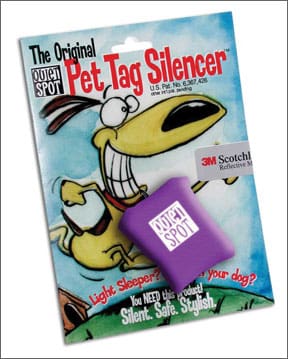
288
You might also want to have a light line or long line in your supply closet, for those times when you want to give your dog more freedom but you’re not ready to let him off-leash. A dog can get a lot of exercise on a light line or long line in an open field, and it’s a perfect opportunity to work on recalls. A light line is a thin cord; a long line is normal or slightly narrower nylon leash material, anywhere from 10 to as much as 60 feet long or more. My Scottie wears a light line on all hikes – in woods as well as open fields – but it takes some practice to be able to keep the line from getting tangled in brush and trees. Others use light lines when practicing in unfenced agility fields.
- Light Lines and Long Lines – genuinedoggear.com; (813) 920-5241
My favorite front-clip harness is the Freedom Harness, sold by Wiggles, Wags & Whiskers. This harness is made of superior quality materials in the USA, and fits better than many of the other no-pull harnesses I’ve tried on the market.
- Freedom Harness – wiggleswagswhiskers.com; (866) 944-9247
Head halters were once all the rage in the positive training field, and many trainers, including yours truly, have backed away from using them as we realized how aversive they were for a lot of dogs. Many dogs require a significant amount of conditioning to accept the halter, and even then never really seem to like it, as they take every opportunity to rub their haltered faces on grass, owners’ legs, and furniture. For those dogs who can be conditioned to love them, halters can be a very useful tool, especially for controlling dogs who have aggressive behaviors. Every model on the market fits some dogs better than others, so it’s best if you are able to try different models on your dog to decide which will fit best and bother your dog the least.
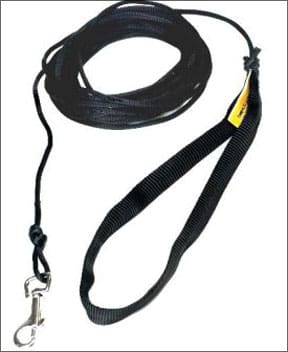
288
- Comfort Trainer Head Halter – ahimsadogtraining.com; (206) 364-4072
- New Trix Head Halter – newtrix.ca; (866) 384-2135
- Snoot Loop Head Halter – snootloop.com; (718) 891-4200
A reward marker is a word or a sound that lets your dog know the instant he’s earned a reinforcer. It’s an incredibly powerful addition to a positive training program, as it communicates much more clearly to your dog what he’s getting the reward for, than does the simple (and often tardy) delivery of a treat. It makes him a real partner in the program, as he will begin to offer rewardable behaviors deliberately in order to try to make you click the clicker – always a prized moment in a clicker training program.
Some people don’t like using a clicker “gadget.” Or they may love the clicker but know they won’t always have one in their hands when they need it. Never fear, there are many possible reward markers. While a novel sound that is always consistent (the click of the clicker) has advantages, I also teach my dogs a verbal marker, for those times I don’t have a clicker. You can use a mouth-click sound, snap your fingers, use the word “Yes!” in a consistent tone of voice that’s different from the way you would say it in normal conversation, or say “Click!” You can still be a clicker trainer even if you don’t use a clicker, as long as you use some kind of reward marker, and avoid training tools and methods that cause fear or pain. Just remember that your reward marker must always be followed by a high-value reinforcer if you want it to retain its power.
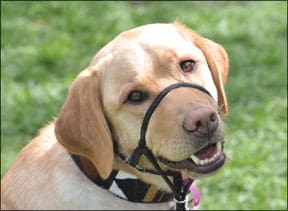
288
Any inexpensive clicker from any pet supply store will do the trick. Some people like the ones with a button on the outside of the clicker. I prefer the plain box models that are clicked by pressing a thumb into the box. For sound-sensitive dogs, look for models with especially soft, quiet clicks, such as the i-Click Clicker from Karen Pryor’s Clickertraining Store.
- i-Click Clicker – from Karen Pryor’s Clickertraining Store store.clickertraining.com; (800) 472-5425
Basic Dog Care
Every dog has to eat and drink out of some sort of bowl, and when they do, there’s a big advantage to using stainless steel. These utilitarian dishes are not cute – but they are dishwasher-proof, and they won’t rust, shatter, or leach harmful chemicals into everything your dog consumes out of them. Pretty much every pet supply store and catalog has them, so we won’t list sources. Don’t give into the temptation to use anything else.
Another article in this issue (“Buckle Up Your Pup!” on page 4) addresses why you should use a safely secured crate or a harness and canine seat belt every time your dog rides in the car. The Clix Car Safe Harness features a piece of hardware that snaps right into your car’s seat belt mechanism. The Roadie Canine Travel Restraint is a bit more difficult to put on the dog, but it’s designed and built to withstand serious, freeway-speed crashes. I’d feel safe with the Clix around town; I’d want the Roadie if my dog commuted regularly with me on the freeway.
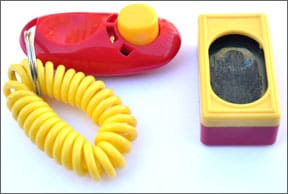
288
- Clix Car Safe Harness – from Karen Pryor’s Clickertraining Store $20-$35. store.clickertraining.com; (800) 472-5425
- Roadie Canine Travel Restraint – $45-$57. ruffrider.com; (866) 592-6837
Ever-Important Toys
Of course no dog’s home would be complete without a supply of canine toys. It’s critical to take the time to figure out your dog’s toy preference, and to work with him to broaden his repertoire of playthings. I let my dogs tell me what their favorite toys are by offering them lots to choose from; I also take the time to teach them games that may not come naturally to them.
Toys don’t have to be expensive or fancy. Tennis balls, sticks, and flying discs are favorites for many dogs (and yes, we know that tennis balls can wear down teeth, sticks can splinter, and dogs can blow their ACLs by leaping in the air, but used with good judgment they can be great toys all the same).
My Scorgidoodle, Bonnie, discovered that tangerines and oranges are wonderful toys (and I like that they don’t wear down teeth!); plus, after three to four days of play they double as a nice healthy snack. She even taught two other canine family members about the joy of fruit-as-toys.
On the commercial side, a good tug toy is a must for many dogs. I prefer tugs that are long enough to keep my dog’s teeth far away from my skin. One of my favorite tug toy sources is Helping Udders, maker of Udder Tugs. They have great tug toys (made with parts from milking machines) and they donate a portion of their proceeds to rescue groups.

288
If your dog hasn’t yet learned the joy of tugging, the online dog sports supply store Clean Run offers a unique tug toy that also dispenses food. The “Tug It!” is made of a nylon-polyester mesh and meant to be stuffed with a semi-solid food (like the Natural Balance rolls); the food strains through the toy as your dog tugs. The harder he tugs, the more food he gets.
Also on my list of favorites are interactive toys. A staple for every dog owner is the Kong – a hard rubber toy that is easily stuffed with a dog’s dinner or treats. Filled with soft food, it can even be frozen for longer-lasting entertainment. Kong Company also sells a slew of other wonderful treat-dispensing and interactive toys that you can leave with your dog, unattended.
For toys you and your dog play with together, check out the Nina Ottosson Zooactive toys. We reviewed these toys a couple of years ago (“A Puzzling Activity,” June 2008) and our dogs had a blast! Although they are manufactured in Sweden, you can find these toys for sale through a number of US distributors.
Then there’s that staple, the soft squeaky toy. Countless owners have shelled out big bucks for fancy plush toys, only to find the toys eviscerated, sometimes within minutes of handing them to the dog. A new genre of tougher toys has been developed, including the Tuffy Toys, which are numbered according to their toughness (a “10” is the toughest); and the disconcertingly named Road-Kill toys. The latter are not as durable as the Tuffys, but are double-stitched and contain no stuffing, so at least there’s no mess to clean up, and not as much reinforcement for evisceration.
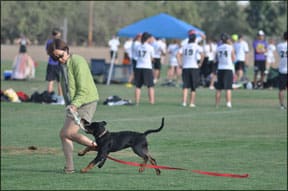
288
We’ve only scratched the surface here of dog toys now on the market. Browse the Internet, check out pet supply catalogs, and go play with your dog!
- Udder Tugs – from Helping Udders. $10-$24. helpingudders.com; (620) 488-5488
- Tug It! – from Clean Run. $15. cleanrun.com; (800) 311-6503
- Kong toys – from Kong Company. $10-$20. kongcompany.com; (303) 216-2626
- Nina Ottosson toys – can be viewed at nina-ottosson.com.
$40 and up from Paw Lickers Bakery and Boutique
(pawlickers.com; 888-868-PAWS) and Karen Pryor’s
Clickertraining Store (store.clickertraining.com; 800-472-5425) - Tuffy Toys – $17. tuffietoys.com; (866) 478-0848
- Road Kill toys – $10-$20. smartpakcanine.com; (888) 586-6808
Management
There are lots of management tools that make life easier for you and your dog. Crates, once available only in “basic kennel wire,” now come in all kinds of designer styles suitable for any décor. Check out In the Company of Dogs for a wide variety of attractive crates, pens, and gates that will keep your canine pal out of trouble, and your home out of harm’s way. Less attractive but more utilitarian offerings can be found in most pet supply stores and in catalog/website stores like Drs. Foster & Smith.

288
- Designer crates – from In the Company of Dogs, $149 and up inthecompanyofdogs.com; (877) 757-3477
- Airline–style crates – from Drs. Foster & Smith, $25 and up
drsfostersmith.com; (800) 381-7179
Chaos would reign in my household without the judicious use of portable gates. We have one at the bottom of the stairs to our second floor, so our cats can have a domain of peace and quiet without having to keep one eye open for dogs. Our living room is gated, too, so we can limit our dogs’ access to that area to those times when we are with them. A third gate blocks off one upstairs bathroom, where the cats’ food bowls and litter boxes rest safely out of reach of dogs.
I prefer pressure-mounted gates with a latch that you can open and walk through (instead of climbing not-so-gracefully over) to those that actually screw into the door frame. If we need to change the position of the gates, it’s easy to move a pressure-mounted barrier to another location, without leaving holes to be patched. These hold up well to all but the most determined gate crashers, and can be found in tall versions if you have a dog who delights in bounding over them. Pet Gates Direct has a large selection of gates, including wide ones, especially tall ones, and one with a cat door at the bottom so your feline family members can come and go with impunity.
- Gates – from Pet Gates Direct, wide variety of styles and materials (and prices). pet-gates-direct.com; (407) 349-2525
Tethers are another useful tool for keeping your dog under wraps – indoors, within your presence. Attached to a secure object (think grand piano for those large, strong dogs!) a tether can, among other things, prevent counter-surfing, manage intra-pack issues, and help teach polite greetings to visitors. A good source for tethers is BADDogs Inc. Family Dog Training.

288
0)]
- Tethers – from BADDogs Inc. Family Dog Training, $8-$12. baddogsinc.com; (951) 283-2101
One of your best management tools is a solid, visible, fence (see “Fence Sense,” May 2009). While I don’t advocate ever leaving your dog in his yard when you’re not home to supervise, a fenced yard offers your dog off-leash playtime without the added worry of him taking off to visit the neighbors (or having the neighbors’ aggressive dogs enter your electronically “fenced” yard and attack your dog). Absent a fenced yard, you must always go out with your dog if you want to be sure he stays safe and close to home.
Dog care professionals
It turns out that it takes a village to raise a dog properly, too. Research and interview the following dog care professionals before you need them!
Your dog’s veterinarian is a key part of keeping your dog healthy and happy for the 12 to 18 years he’s going to be with you. Take the time to find a veterinarian you like – one who patiently answers your questions, explains thoroughly the nature of any treatments your dog needs, and is willing to work with you to make important decisions regarding your dog’s health. Take extra care to be sure your veterinarian understands and supports your positive approach to training and handling, and is open to your requests to custom-tailor your dog’s vaccinations and treatments to fit your desires. Tell her that you intend to be present for all procedures, and make sure she will accommodate that.
You can find veterinarians in your area online or in the yellow pages. Ask your dog-owning friends about the veterinarians they use. Make an appointment to meet and interview the vets you select (be prepared to pay for their time), and select the one you feel good about. If you are looking for a holistic veterinarian, contact the American Holistic Veterinary Medical Association to find a practitioner near you: ahvma.org; (410) 569-0795.
Your pet sitter will interact with your dog in your absence, so it’s even more critically important that you are comfortable with his methods and ethics. Make sure he understands and will comply with your wishes regarding equipment use (no shock or prong collars!) and handling techniques – positive only, no alpha rolls, finger pinches, or other punitive corrections. Be clear if you are comfortable (or not!) with your sitter walking multiple dogs at a time, or allowing your dog to interact with other dogs.

288
1)]
A professional sitter will provide a contract that clearly spells out expectations and responsibilities on both sides. In addition to searching the Internet and phone book, ask friends, your veterinarian, and your local shelter for pet sitter referrals. Your professional pet sitter will probably be a member of the National Association of Professional Pet Sitters (petsitters.org or 856-439-0324). You can search on its website for a certified pet sitter near you.
Select your dog’s training and behavior professionals carefully. There are no legal requirements in the U.S. for someone to call themselves a dog trainer. Trainers who care about professional standards pursue ongoing education, membership in and certification offered through one or more of a number of organizations, such as:
- Certification Council for Professional Dog Trainers.
CPDTs are required to have at least 300 hours of training experience, provide references, and pass a written test. The CCPDT is working on a second level of certification for behavior consultants. You can search for CPDTs at ccpdt.org or call (212) 256-0682 for a reference to a trainer near you. - International Association of Animal Behavior Consultants. The IAABC offers certification for behavior work with a variety of species, including dogs, cats, horses, and birds. You can find Certified Dog Behavior Consultants (CDBC) at iaabc.org or write to IAABC, 565 Callery Road, Cranberry Township, PA 16066.
- Karen Pryor Certified Trainer. Karen Pryor is a former marine mammal trainer and author of the landmark book, Don’t Shoot the Dog, which launched the positive training movement. Pryor now offers certification via “Karen Pryor Trainers” around the country (and soon in Australia). KPCTs do extensive online study, apply that training to their own dogs, and attend several hands-on training weekends with their designated instructors to demonstrate their own and their dogs’ acquired skills.
- Pat Miller Certified Trainer. I now offer certification for trainers who have completed my Level 1 and both Level 2 Academies (Behavior Modification and Instructor’s Course) and an additional level of certification for my Level 3 Behavior Study course. Students in the Level 1 and Instructor’s Courses work with shelter dogs, and usually bring their own dogs for behavior modification. The second level of certification requires submission of CEUs for ongoing study.
Certification is also available for groomers. You can find a certified groomer through the National Dog Groomers Association of America (nationaldoggroomers.com or 724- 962-2711). All of the prior cautions hold true here as well; if you leave your dog in someone else’s hands, you must trust that they will be as gentle and caring with her as you are.
I discussed doggie daycare providers last month, in “Doggie Daycare: Yay! Or Nay?” If daycare is in your dog’s future, be sure to check out the facility thoroughly, using the criteria described in the November article. Some daycare facilities are terrific; some, not so much.
Pat Miller, CPDT-KA, CDBC, is WDJ’s Training Editor. Miller lives in Fairplay, Maryland, site of her Peaceable Paws training center. Pat is also author of several books on positive training.


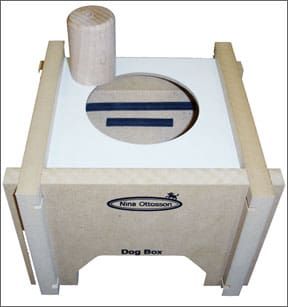
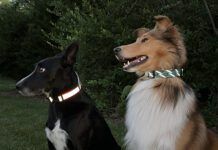


Were can I Grooming my dog…